The veterinary healthcare market size is projected to reach US$ 156.53 billion by 2031 from US$ 93.49 billion in 2024; it is estimated to register a CAGR of 7.7% during 2025–2031. The technological advancements in veterinary healthcare products are likely to bring new trends to the market in the coming years.
Veterinary Healthcare Market Analysis
The market growth is driven by the surging prevalence of zoonotic diseases and soaring initiatives for animal health. Collaborations and funding by the animal welfare associations are increasing the production and distribution of new vaccines and diagnostic tools. The "Roadmap to Reducing the Need for Antibiotics" program was launched by HealthforAnimals in 2019 and has since seen investments in research and development. This initiative includes commitments to develop new vaccines and diagnostics, as well as to educate medicine users on responsible practices. As per the program, 71 new vaccines and 28 diagnostic tools will be brought to market by 2025, enhancing disease management capabilities.
With the growing demand for veterinary healthcare fueled by increasing pet ownership, livestock husbandry requirements, and international disease prevention programs, manufacturers are investing in developing new veterinary pharmaceuticals, including targeted therapies, biologics, and medical devices. According to the "Roadmap to Reducing the Need for Antibiotics" program by HealthforAnimals, approximately US$ 6.3 billion has been invested in research and development activities in the animal health sector since 2019. Thus, the increasing R&D efforts and investments in the animal healthcare market are fostering innovation, enhancing treatment options, and improving disease management capabilities.
Veterinary Healthcare Market Overview
According to the World Organization for Animal Health (WOAH), ~60% of pathogens causing human diseases come from domestic animals or wildlife, and 80% of bioterrorism-related pathogens originate from animals. Common zoonotic diseases include Ebola, rabies, salmonella, anthrax, Lyme disease, E. coli, and bird flu. HIV originated as a zoonosis before mutating into human-only strains. As per the WHO, animal diseases lead to over 20% of global production losses in livestock, threatening the livelihoods of rural communities dependent on animal agriculture. The increasing incidences of zoonotic diseases propel the demand for vaccinations and diagnostic tests. This demand is driving the emphasis on animal healthcare products and services, as pet owners and farmers aim to protect their animals and, in turn, safeguard human health. Efforts to manage and treat zoonotic diseases have fueled the development of new medications and treatments. This expansion in treatment options contributes to market growth as companies invest in research and development to address these health challenges.
Customize This Report To Suit Your Requirement
You will get customization on any report - free of charge - including parts of this report, or country-level analysis, Excel Data pack, as well as avail great offers and discounts for start-ups & universities
Veterinary Healthcare Market: Strategic Insights
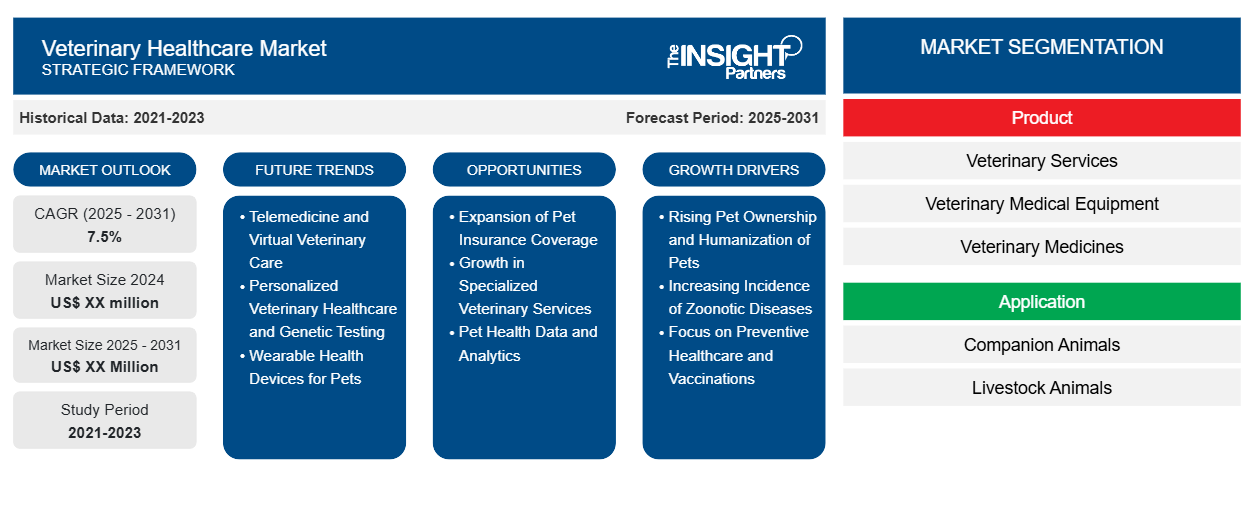
- Get Top Key Market Trends of this report.This FREE sample will include data analysis, ranging from market trends to estimates and forecasts.
You will get customization on any report - free of charge - including parts of this report, or country-level analysis, Excel Data pack, as well as avail great offers and discounts for start-ups & universities
Veterinary Healthcare Market: Strategic Insights

- Get Top Key Market Trends of this report.This FREE sample will include data analysis, ranging from market trends to estimates and forecasts.
Veterinary Healthcare Market Drivers and Opportunities
Surging Initiatives for Animal Health
Over the past decade, there has been a shift in people's perception of animal health as a means of ensuring animal welfare and as a critical factor in public health, food security, and economic stability. The Food and Agriculture Organization (FAO) emphasizes that healthy livestock are essential for sustainable food systems, driving the adoption of pharmaceuticals to prevent foot-and-mouth disease, brucellosis, and avian influenza.
The WHO and the WOAH have launched global awareness campaigns emphasizing the role of vaccination in controlling zoonotic diseases. The WHO's Global Strategic Plan to End Human Deaths from Dog-Mediated Rabies by 2030 boosts initiatives to promote vaccine adoption on a large scale. The increasing availability of information on animal health through digital platforms, veterinary organizations, and public campaigns is boosting the adoption of pharmaceuticals and medical devices. The rise of social media and online resources has empowered pet owners and farmers to learn about the risks of preventable diseases, including zoonotic ones such as rabies and leptospirosis, which can be transmitted from animals to humans.
Increasing Research and Development Activities to Create Growth Opportunities
With the growing demand for veterinary healthcare fueled by increasing pet ownership, livestock husbandry requirements, and international disease prevention programs, manufacturers are investing in developing new veterinary pharmaceuticals, including targeted therapies, biologics, and medical devices. According to the "Roadmap to Reducing the Need for Antibiotics" program by HealthforAnimals, approximately US$ 6.3 billion has been invested in research and development activities in the animal health sector since 2019. Market players are introducing innovative products and securing regulatory approvals for the same. For instance, research and development (R&D) is at the center of Zoetis' efforts to provide animal health solutions that anticipate the future needs of veterinarians and livestock producers. In December 2024, Zoetis announced the global launch of Vetscan OptiCell at the Veterinary Meeting & Expo (VMX) 2025. It is the first cartridge-based, artificial intelligence (AI) powered diagnostic tool for veterinary hematology, providing complete blood count (CBC) analysis that delivers accurate insights in minutes. In October 2023, Zoetis launched Bedinvetmab injection and Oclacitinib chewable tablets, 2 FDA-approved drugs in the US veterinary market. Market players are expanding their R&D capabilities by developing new plants and renovating old ones to boost production capacity. In October 2024, Boehringer Ingelheim announced the opening of its expanded R&D facility in Athens, Georgia, following a US$ 66.1 million investment. The facility serves as the main production site in the US for pet vaccines, and a key manufacturer of wildlife and poultry vaccines and is home to the US Global Innovation Hub. Thus, the increasing R&D efforts and investments in the animal healthcare market are fostering innovation, enhancing treatment options, and improving disease management capabilities.
Veterinary Healthcare Market Report Segmentation Analysis
Key segments that contributed to the derivation of the Veterinary Healthcare Market analysis are animal type, product type, end user, and geography.
- Based on animal type, the veterinary healthcare market is divided into companion, livestock, and poultry. The livestock and poultry segment held the largest share of the veterinary healthcare market in 2024.
- By product type, the global veterinary healthcare market is segmented into pharmaceuticals, medical devices, and feed additives. The pharmaceuticals segment held the largest share of the veterinary healthcare market in 2024.
- By end user, the global veterinary healthcare market is categorized into veterinary hospitals, clinics, and others. The veterinary hospitals segment held the largest share of the veterinary healthcare market in 2024.
Veterinary Healthcare Market Share Analysis by Geography
The geographic scope of the Veterinary Healthcare Market report is mainly divided into five major regions: North America, Europe, Asia Pacific, the Middle East and Africa, and South and Central America. North America dominated the market in 2024. Viral infection among livestock, companion animals, and others is a critical aspect of animal health in the US. The viruses infecting the animals, such as Avian influenza virus and rabies, cause the virus to spread at a faster rate. The immunization of the animal from such viruses is of prime importance in animal healthcare. Foot-and-mouth disease (FMD) is a contagious viral disease that affects cloven-hoofed animals, such as cattle, pigs, sheep, and goats. While the US has been free of FMD for decades, outbreaks in other parts of the world, particularly in regions with close international trade and animal transport, present an ongoing risk. The US government and agriculture industry are ready to respond quickly if an outbreak occurs, with vaccines being essential for managing and controlling the disease.
The increasing pet ownership is driving the demand for vaccinations for companion animals in the country. According to the 2023–2024 American Pet Products Association Survey, 66% of US households, which equates to 86.9 million households, own a pet. The rising product approvals by the US Food and Drug Administration (FDA) further contribute to the demand. In September 2024, the US FDA approved Zenrelia, a safe, effective, and convenient once-daily oral JAK inhibitor for the control of pruritus (itching) associated with allergic dermatitis and control of atopic dermatitis in dogs.
Veterinary Healthcare Market Regional Insights
The regional trends and factors influencing the Veterinary Healthcare Market throughout the forecast period have been thoroughly explained by the analysts at Insight Partners. This section also discusses Veterinary Healthcare Market segments and geography across North America, Europe, Asia Pacific, Middle East and Africa, and South and Central America.
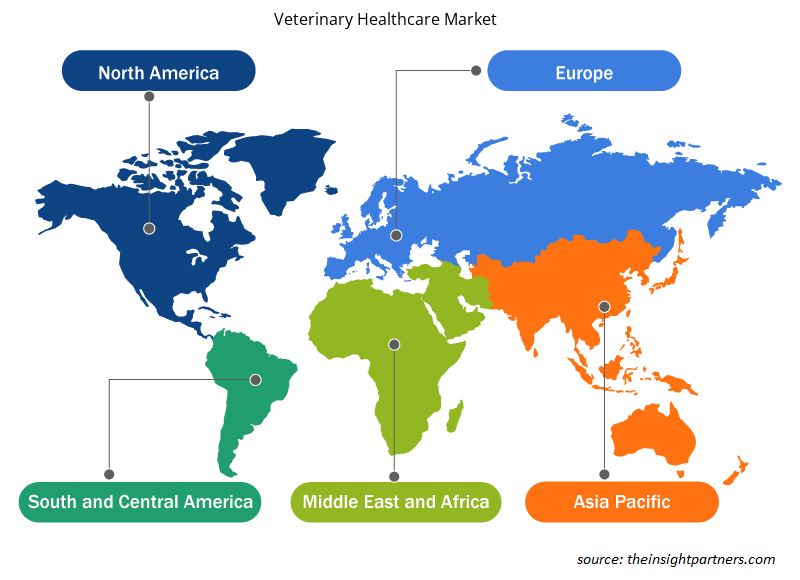
- Get the Regional Specific Data for Veterinary Healthcare Market
Veterinary Healthcare Market Report Scope
| Report Attribute | Details |
|---|---|
| Market size in 2024 | US$ 93.49 Billion |
| Market Size by 2031 | US$ 156.53 Billion |
| Global CAGR (2025 - 2031) | 7.7% |
| Historical Data | 2021-2023 |
| Forecast period | 2025-2031 |
| Segments Covered |
By Product Type
|
| Regions and Countries Covered | North America
|
| Market leaders and key company profiles |
Veterinary Healthcare Market Players Density: Understanding Its Impact on Business Dynamics
The Veterinary Healthcare Market market is growing rapidly, driven by increasing end-user demand due to factors such as evolving consumer preferences, technological advancements, and greater awareness of the product's benefits. As demand rises, businesses are expanding their offerings, innovating to meet consumer needs, and capitalizing on emerging trends, which further fuels market growth.
Market players density refers to the distribution of firms or companies operating within a particular market or industry. It indicates how many competitors (market players) are present in a given market space relative to its size or total market value.
Major Companies operating in the Veterinary Healthcare Market are:
- Boehringer Ingelheim International GmbH,
- Zoetis Inc,
- Merck & Co Inc,
- Shenzhen Mindray Animal Medical Technology Co., LTD,
- Neogen Corp,
- Idexx Laboratories Inc,
Disclaimer: The companies listed above are not ranked in any particular order.
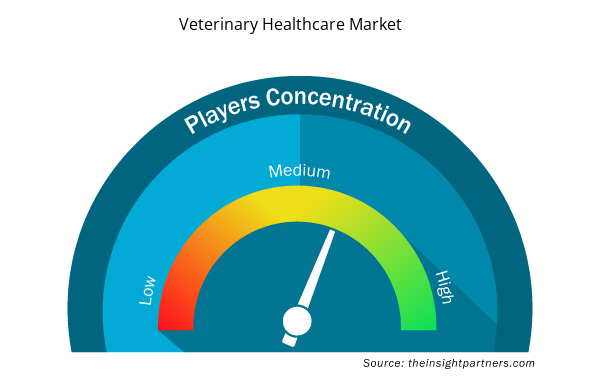
- Get the Veterinary Healthcare Market top key players overview
Veterinary Healthcare Market News and Recent Developments
The veterinary healthcare market is evaluated by gathering qualitative and quantitative data post primary and secondary research, which includes important corporate publications, association data, and databases. Key developments in the market are listed below:
- Ceva inaugurated the Biogenovac genomics laboratory in France. This facility is dedicated to developing future vaccines by leveraging advanced genomic technologies and bioinformatics. The laboratory aims to create tailored vaccine solutions that can rapidly respond to emerging infectious diseases in animals. (Source: Ceva Sante, Company Website, 2025)
- Mindray Animal Medical officially began construction of Mindray Animal Tech Park, the new global headquarters for Mindray Animal Medical in Longhua, Shenzhen. Spanning nearly 60,000 m2 with a total building area of approximately 180,000 m2, the Mindray Animal Tech Park will serve as the new global headquarters for Mindray Animal Medical. (Source: Mindray Animal Medical, Company Website, 2024).
Veterinary Healthcare Market Report Coverage and Deliverables
The "Veterinary Healthcare Market Size and Forecast (2021–2031)" report provides a detailed analysis of the market covering below areas:
- Veterinary Healthcare Market size and forecast at global, regional, and country levels for all the key market segments covered under the scope
- Veterinary Healthcare Market trends, as well as market dynamics such as drivers, restraints, and key opportunities
- Detailed PEST and SWOT analysis
- Veterinary Healthcare Market analysis covering key market trends, global and regional framework, major players, regulations, and recent market developments
- Industry landscape and competition analysis covering market concentration, heat map analysis, prominent players, and recent developments for the veterinary healthcare Market
- Detailed company profiles
- Historical Analysis (2 Years), Base Year, Forecast (7 Years) with CAGR
- PEST and SWOT Analysis
- Market Size Value / Volume - Global, Regional, Country
- Industry and Competitive Landscape
- Excel Dataset
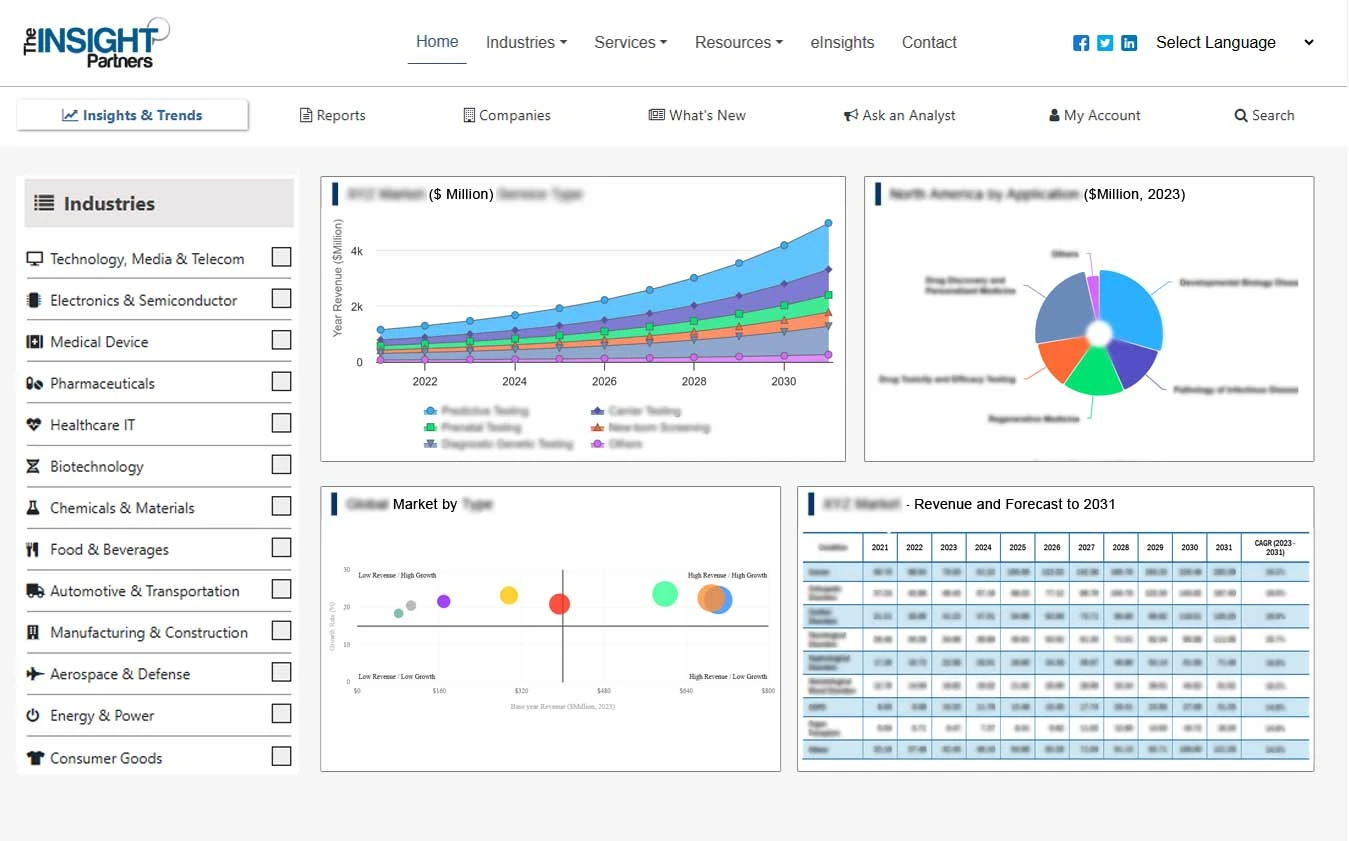
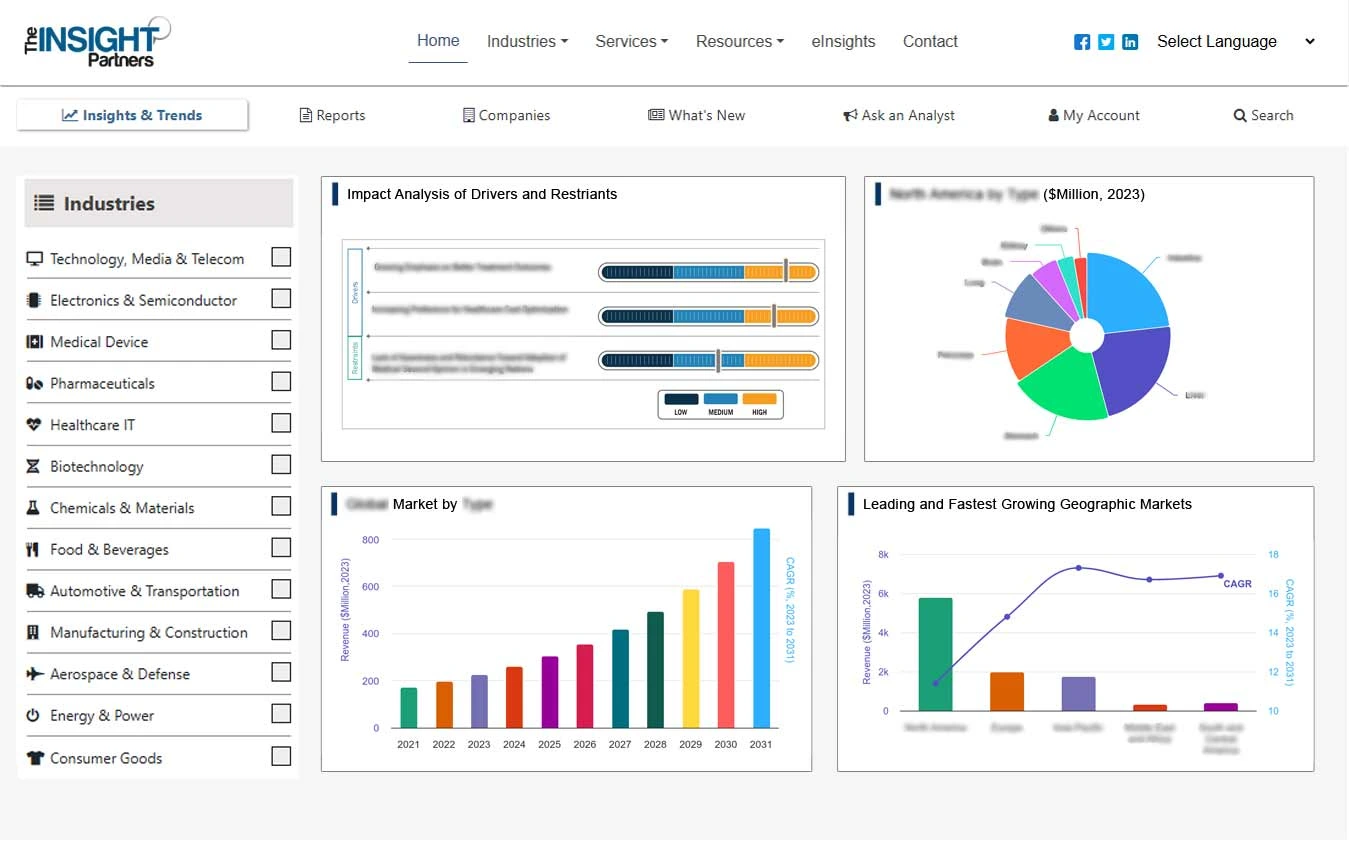
- Artificial Intelligence in Defense Market
- Sports Technology Market
- Investor ESG Software Market
- Small Internal Combustion Engine Market
- Flexible Garden Hoses Market
- Battery Testing Equipment Market
- Railway Braking System Market
- Point of Care Diagnostics Market
- Rare Neurological Disease Treatment Market
- Greens Powder Market

Report Coverage
Revenue forecast, Company Analysis, Industry landscape, Growth factors, and Trends

Segment Covered
This text is related
to segments covered.

Regional Scope
North America, Europe, Asia Pacific, Middle East & Africa, South & Central America

Country Scope
This text is related
to country scope.
Frequently Asked Questions
What would be the estimated value of the veterinary healthcare Market by 2031?
The market value is expected to reach US$ 156.53 billion by 2031.
Which are the leading players operating in the veterinary healthcare Market?
Boehringer Ingelheim International GmbH, Zoetis Inc, Merck & Co Inc, Shenzhen Mindray Animal Medical Technology Co., LTD, Neogen Corp, Idexx Laboratories Inc, Elanco Animal Health Inc, HIPRA SA, Ceva Santé Animale, and Antech Diagnostics, Inc are key players in the market.
What is the expected CAGR of the veterinary healthcare Market?
The market is expected to register a CAGR of 7.7% during 2025–2031.
What are the future trends in the veterinary healthcare Market?
Technological advancements in veterinary healthcare products are expected to emerge as a prime trend in the market in the coming years.
What are the factors driving the veterinary healthcare Market growth?
The surging prevalence of zoonotic diseases and growing initiatives for animal health fuel the market growth.
Which region dominated the veterinary healthcare Market in 2024?
North America dominated the market in 2024.
Trends and growth analysis reports related to Life Sciences : READ MORE..
The List of Companies - Veterinary Healthcare Market
- Boehringer Ingelheim International GmbH
- Zoetis Inc
- Merck & Co Inc
- Neogen Corp
- Elanco Animal Health Inc
- HIPRA SA
- Ceva Santé Animale
- Shenzhen Mindray Animal Medical Technology Co., LTD
- Idexx Laboratories Inc, Elanco Animal Health Inc
- Antech Diagnostics, Inc

 Get Free Sample For
Get Free Sample For